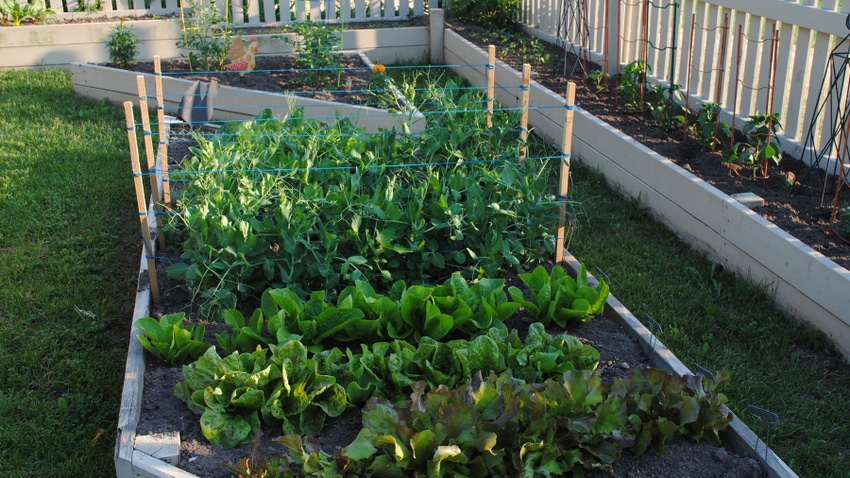
Growing vegetables is a very rewarding experience. Homegrown vegetables taste so much better than what you can buy at the store and are very healthy for you and your family. If you have decided this is the year to take the plunge and plant a garden, I have five tips to consider before you get started:
1. Select the right site. Choose a spot that gets lots of sun, ideally six to eight hours a day. It should be level, well-drained and sheltered from wind. Make sure the spot is at least 50 feet from a black walnut tree. Black walnut tree roots exude a chemical called juglone into the soil that is toxic to many vegetable plants and kills them.
The site you select for your garden should be within 50 feet of a water source that a garden hose can easily reach.
If the soil is not fertile, you can amend it with bags of topsoil and soil for vegetable gardens purchased at a garden center. You can also mix in a bag or two of dried cow manure, depending on how big your garden is. Resist using manure from your own farm or a neighbor’s farm, as it likely will contain weed seeds that will grow in your garden.
You could also plant your garden in a raised bed. Raised beds require less bending and make it easier to plant, weed, water and harvest. Raised beds are especially beneficial for anyone with mobility issues, as you can adjust the height of the bed to suit your needs.
2. Remember, size matters. You may have grand plans to plant a large garden. However, if you are new to vegetable gardening, it’s probably best to start with a small plot. If this year’s garden goes well, next year you can add more space after you know how much time and energy you can give to caring for a garden and how many vegetables you really need.
Before you begin planting anything in your garden, there is the task of clearing the area and getting it ready. The amount of work involved will depend on where you are planning the plot and what stood on that area previously.
3. Decide what to grow. One of the most exciting parts of starting a vegetable garden is planning what you will grow. There is such a huge and varied range of vegetables. The best way to decide what to grow is to think about what you and your family like to eat. There is always room for experimentation, but a good way to start is to focus on growing what you regularly eat. If you eat a lot of carrots, beets and broccoli, opt for growing those in your garden. Tomatoes, bell peppers, lettuce, onions, peas and green beans are other popular choices that are fairly easy to grow.
4. Consider seeds vs. plants. Carrots, beets, peas, lettuce and green beans can be seeded directly into your garden. Onions are easy to grow. Make sure you plant the bulbs 3 to 4 inches apart, so they have room to grow.
Tomatoes, bell peppers and broccoli plants can be purchased at a garden center. They are a more expensive option than growing plants from seeds, but they can provide an instant impact, as they are easier to grow and can be planted directly in the garden. This is the best option for most beginners, because there is quite a learning curve for starting plants from seeds before planting them in your garden.
When planting your garden, be sure to leave plenty of room for plants to grow. For example, plant tomatoes a minimum of 3 feet apart, and bell peppers and broccoli 12 to 15 inches apart. Follow directions on the seed packets and plant stakes, which say how deep plants should be planted and how far apart.
5. Don’t forget to water. After you finish planting your garden, water it thoroughly. Unless it rains a half-inch or more, plan to water your garden every other day, and every day on hot days in May and June. By July, your plants will be growing fast and likely will require watering every day.
It is your choice if you want to go up and down the rows and water with a hose or set up a sprinkler on a timer. The advantage of watering in the rows with a hose is you know how much water each plant receives, and you are watering just the plants, not the area in between the rows. This slows weed growth and wastes less water.
Don’t be afraid to experiment in your garden and ask questions. Talk to the experts at the garden center or to friends and relatives who have grown vegetables. The process may seem daunting at times, but the experience of growing your own vegetables is easier than it looks and is very rewarding.
About the Author(s)
You May Also Like






